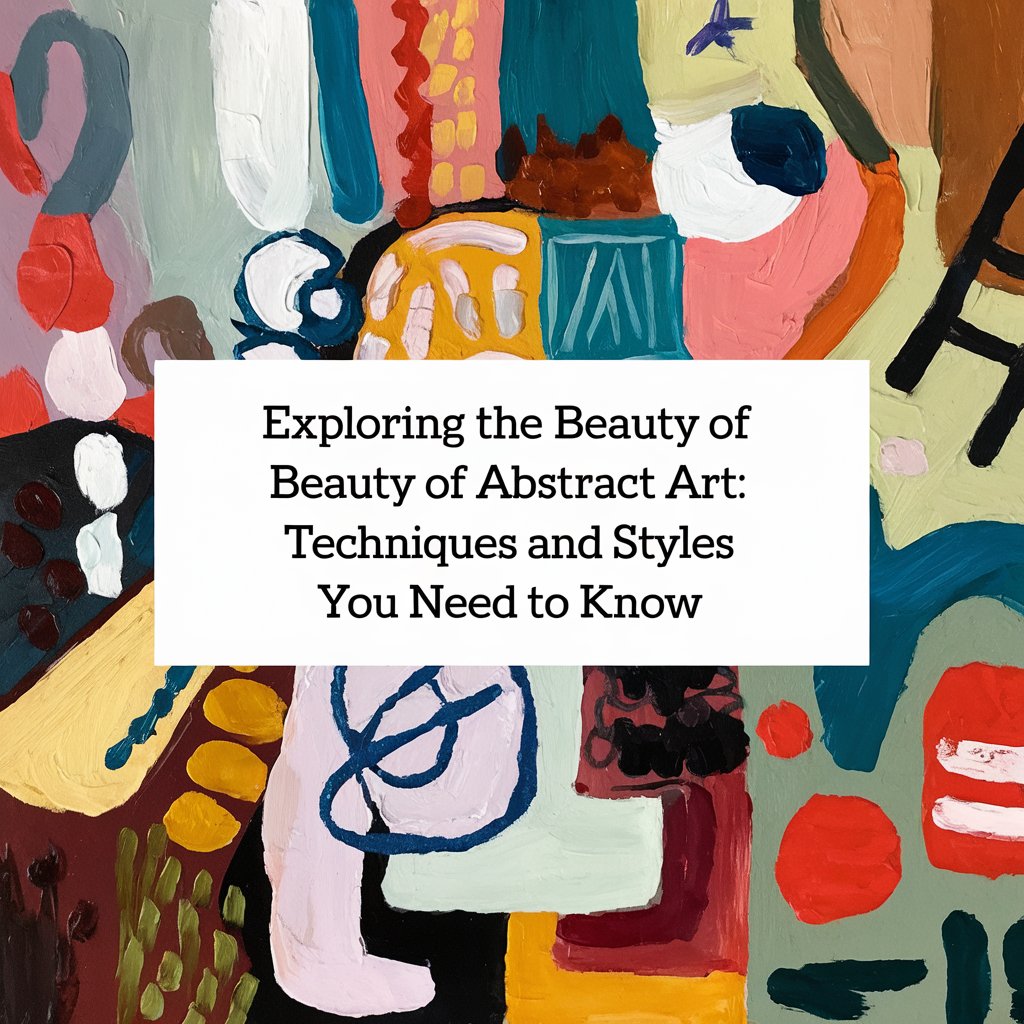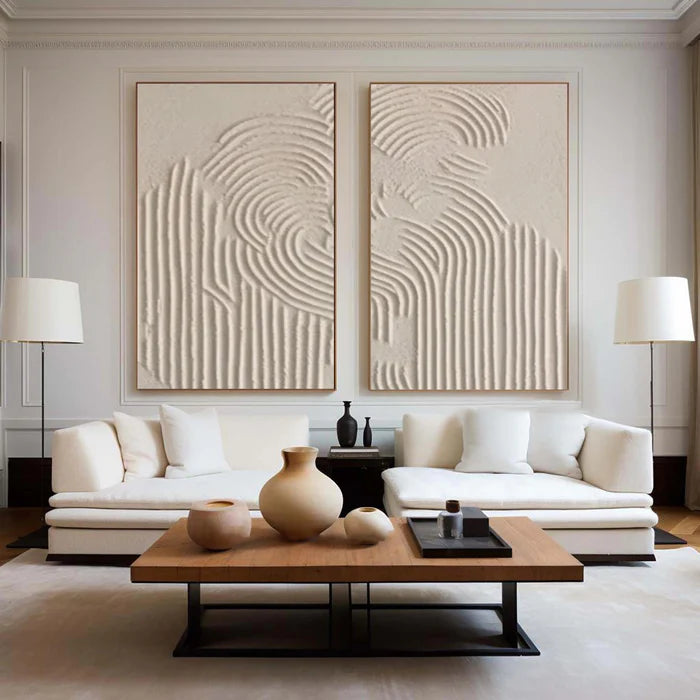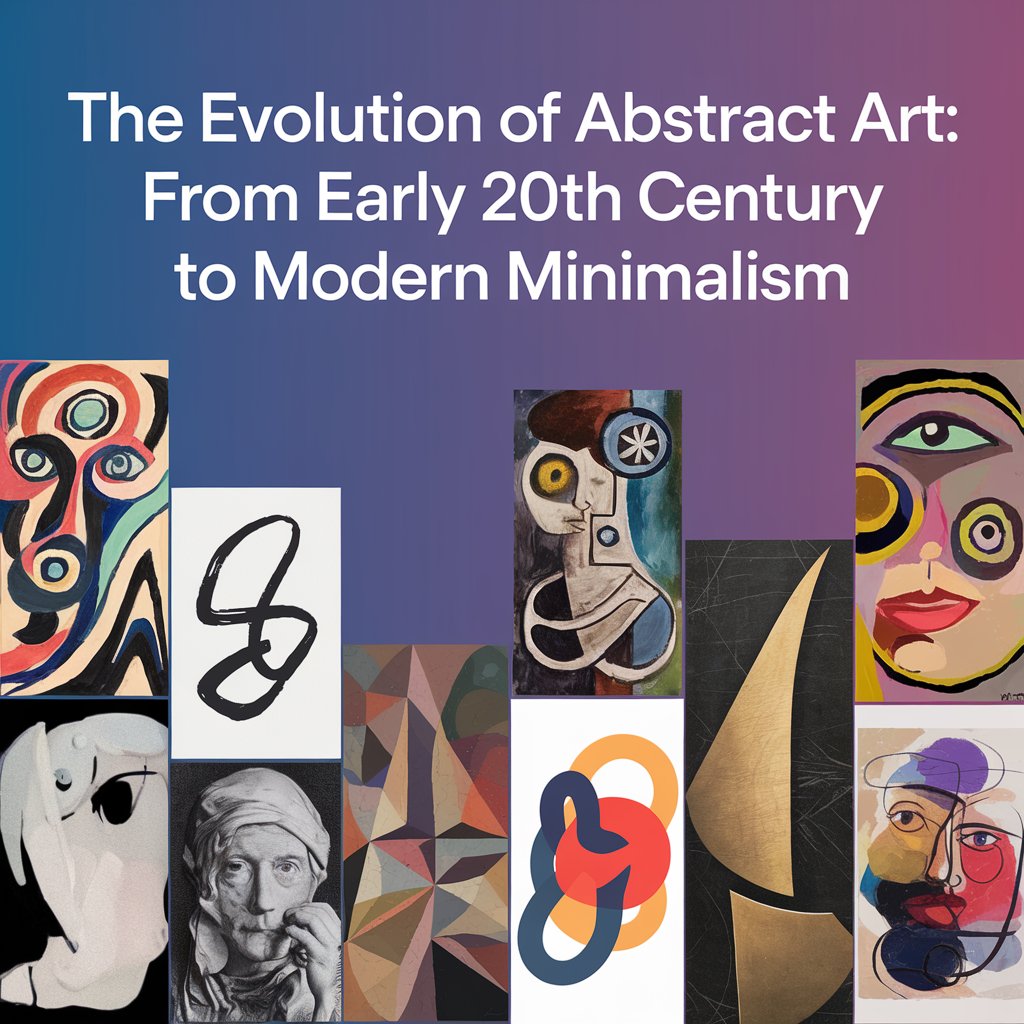
Exploring The Beauty of Abstract Art: Techniques and Styles You Need to Know
The beauty of abstract art lies in its boundless freedom. You can craft an abstract painting by applying paint to a canvas in any manner you desire. There are no rigid rules or specific skills required. It makes the act of creating abstract art accessible to all.
You know what—Abstract art captivates audiences and artists alike. This art form breaks the boundaries of traditional representation. It encourages freedom of expression and creative exploration. Artists transform their feelings and experiences into visual forms through various abstract painting techniques.
Its approach invites personal interpretation. Modern abstract art offers you a versatile medium for both artists and viewers.
What’s the Essence of Abstract Art?
Abstract art challenges viewers to see beyond literal representation. It encourages your engagement on an emotional and intellectual level. Artists draw upon their feelings and memories. They translate these concepts into visual forms that resonate with viewers. This process allows for diverse interpretations. It also makes abstract art unique and dynamic.
Common Techniques Used in Abstract Art
Artists use various techniques to create abstract works. Each technique offers different textures, compositions, and visual effects. Here are some popular techniques in abstract art:
Geometric Abstraction
This technique uses geometric shapes like squares and circles. Artists like Piet Mondrian and Kazimir Malevich excel in this style. They create visually balanced compositions that evoke harmony and order.
Drip Painting
Associated with the Abstract Expressionist movement, drip painting involves pouring paint onto a canvas. Jackson Pollock famously created dynamic works through chaotic splatters and drips. These paintings convey movement and energy.
Color Field Painting
This technique emphasizes large areas of color on the canvas. It highlights the emotional impact of color over form. Mark Rothko’s works demonstrate color field painting. His pieces invite feelings of contemplation and introspection.
Mixed Media
Many contemporary abstract artists use various materials and techniques. They create textured and layered artworks. This can include paint, ink, collage elements, or digital techniques. Artists like Julie Mehretu produce visually rich pieces that challenge perceptions.
Collage and Assemblage
This technique combines materials such as paper, fabric, and found objects. Collage and assemblage explore themes of identity, memory, and culture. Artists integrate diverse elements into their compositions, adding depth to their work.
Most Popular Styles of Abstract Art
The world of abstract art is vast and varied. It includes a range of styles that reflect artists' experiences and visions. Here are some notable styles within the abstract art movement:
Abstract Expressionism
This style emphasizes spontaneous and expressive brushwork. Artists like Willem de Kooning and Franz Kline capture intense emotions through raw and dynamic forms.
Minimalism

Minimalism contrasts with Abstract Expressionism. You can see it focuses on simplicity. Artists like Donald Judd and Agnes Martin use basic shapes and limited colors. They create works that invite quiet contemplation.
Futurism
This early 20th-century movement celebrates modernity and technology. It emphasizes speed, movement, and dynamic forms. Futurist artists like Umberto Boccioni capture the energy of the modern world through abstract shapes.
Surrealism
Despite its emphasis on dreamlike imagery, surrealism also includes abstraction. Artists like Salvador Dalí and Joan Miró blend abstract elements into their works, which blur the lines between reality and the subconscious.
Contemporary Abstract Art
Abstract art continues to evolve. Contemporary artists explore new materials, technologies, and themes. This evolution reflects current social and cultural dialogues, which inspire artists to draw from diverse sources.
How to See Through the Beauty of Abstract Art?
First of all, you need to keep an open mind. Abstract art is subjective, which invites personal interpretation. You may approach artworks with curiosity. It allows you to explore your emotional reactions and thoughts. Next, take time to observe the elements of the piece.
You may examine the composition, colors, and forms used. You can consider how these elements interact. Notice how they contribute to the overall impact of the artwork. Your experience can be enhanced if you understand the background of contemporary abstract artists. Look into their experiences and influences. This research reveals the messages they aim to convey through their art, especially in various abstract art styles.
If you engage in conversations about modern abstract art with others. It is easier to understand and appreciate different works when we share perspectives. You have to discuss your thoughts with fellow art enthusiasts. This exchange can lead to new interpretations. It also provides valuable insights.
Conclusion
Abstract art remains a vibrant and evolving genre. It continues to captivate audiences around the world. Artists can express their individuality through various abstract canvas painting techniques and styles. This expression challenges viewers to engage with art in profound ways.
Artists use geometric shapes, spontaneous brushwork, or mixed media. They create beauty in abstraction. You will have a much easier time working through the modern abstract art world for beginners if you keep an open mind as you go along. Embrace experimentation. Let your imagination flourish.
If you want to know how to create abstract art, remember to enjoy the process and let your creativity lead the way.
FAQs
Why Do People Love Abstract Art?
People love abstract art because it sparks their imagination. For instance, looking at a Jackson Pollock painting allows viewers to interpret the splatters and lines in their own unique way, which surely makes the art deeply personal and open to endless interpretations.
What is The Power of Abstract Art?
Abstract art invites viewers to participate in the creative process. It lacks a fixed subject matter. This openness encourages viewers to engage their imagination. They interpret the artwork through their unique perspectives, memories, and emotions.
What Makes Abstract Art Beautiful?
Abstract art is beautiful because it lets you see the world through a different lens. For example, Mark Rothko’s color field paintings use simple shapes and bold colors to evoke deep emotions, which creates a personal experience for each viewer.
How Do You Describe Abstract Art?
Abstract art does not accurately depict visual reality. Instead, it communicates through lines, shapes, colors, forms, and gestural marks. Abstract artists employ various techniques to create their work. They blend traditional methods with more experimental ideas.



